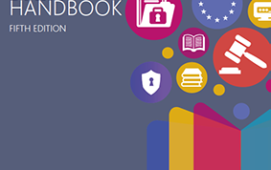
Larry Lawrence has got off to a running start in his first 18 months as head of sustainable finance at data and market technology giant Intercontinental Exchange (ICE).
When ESG Insight spoke to him last year not long into his new job, Lawrence was putting together an expansion plan that he said would harness the disparate strengths of ICE’s extensive financial data and technology capabilities. At the time, he said, ICE’s ESG business had “barely scratched the surface in taking advantage of those foundational elements”.
Eight months later and the surface has been gouged.
In that time, Lawrence has presided over a robust move into the Asia Pacific region. And through a partnership with financial data and analytics provider Dun & Bradstreet, he has begun to weaponise ICE’s geospatial information technology to give investors and corporates deeper insights into the ESG risks of millions of fixed-income assets and companies. Also under his watch, ICE was awarded Best ESG Company Disclosure Provider by A-Team Group’s ESG Insight last month.“The bulk of what we do at ICE, especially in our data business is to help clients value and price assets, help them manage risk, help them invest through our tools and datasets and then help them meet regulatory requirements –climate risk, ESG risk fits so neatly into those four categories that it’s a straightforward and natural extension of what we do,” Lawrence told ESG Insight.
More Companies, More Data
ICE’s geographic ESG expansion has taken it to APAC, which Lawrence says the company views as a critical part of its future global sustainability tapestry. With demand from existing clients to cover the region in response to growing investor and regulatory interest in ESG, ICE has added thousands of local businesses to its coverage of climate and social risk metrics.
Demand for data encompassing Asian entities has come not only from ICE’s domestic customers but also the regional asset managers.
“Part of what we’re trying to solve for is what some people call total portfolio coverage,” Lawrence said. “You can’t really help a large asset manager who is looking across a portfolio exposed to multiple geographies without providing more transparency into companies in different regions.”
Along with Canada and Latin America, APAC offers lots of opportunity for ICE’s ESG services, he said. In particular, Lawrence pointed to the proactive regulators in Japan as well as in Singapore and Hong Kong, as driving sustainability markets in the region. The city states long ago recognised the importance of green markets and stand out globally for their encouragement of data and technology in supporting the development of ESG investing and integration into corporate governance structures.
The addition of Asian companies into ICE’s ESG data sets has increased global coverage to 16,000 firms across 105 countries, taking in 1.4 million corporate equity and fixed income securities. This is hoped to provide a springboard for the expansion of coverage to more companies – and acquisition of more associated data – from a region that has been comparatively slow to open up to ESG.
“Those challenges are there, not only in how information is gathered and disclosed but also by the entities themselves – their ability to report or willingness to report and disclose information is a little bit different,” he said. “We’re starting to see a lot of activity from APAC in terms of interest from investors, so I think that over time, that will drive more transparency, more reporting and more disclosure.”
Fixed Income Focus
In another substantial strategic move, Lawrence is looking to better harness ICE’s reference data solutions on fixed income securities and its geospatial risk assessment technology. Using the RisQ platform it acquired in2021, Lawrence sees huge opportunity in linking the wealth of fixed-income asset and entity data to locational markers to provide asset managers and corporate managers greater visibility into the climate and social risks associated with their assets.
At the moment the technology, which uses machine learning to match data from specific locations with information about assets and companies within that geographical space, is only available for US-based entities. However, Lawrence has begun putting a strategy to cast the net overseas.
“The global expansion is our top priority,” he said. “The biggest questions we receive, literally the most, from our clients is that they love this but when are we going to go global?”
The plan is to “drop” a geospatial reference grid across the world to provide the location-specific plot points from which it harvests data. In the US, the grid has a resolution of 100 metres, but Lawrence expects a global grid initially to be less focused.
Data Overlay
ICE has taken the next step already – to source data that will be overlaid onto that grid. Dun & Bradstreet will provide its supply chain and corporate location data so that corporate planners can take a deep look into the location-linked risks associated with the assets, offices and infrastructure of their tier one and two suppliers.
This will also be available to investors to assess the risks associated with their investments in those companies, as well as real estate and mortgages, assets which have been underserved by ESG, said Lawrence. It will also enable companies and asset managers to benchmark ESG metrics.
“There’s a ton of stuff we can do with that,” he said, also adding that biodiversity and water risk metrics are also on the platform’s jotter.
“It’s great to have all of this, but the difficulty for most people is linking it all back to the securities that you can actually invest in and linking then it back to the entities that issued those securities,” he said. “That’s where we bring in the geospatial and machine learning platform.”
Subscribe to our newsletter




